How Long Does It Take To Cook A Hen
I realize this post will probably elicit a variety of reactions…
Some of you will be thrilled that I'm writing on this topic, since you have old hens or roosters that need a new "job,"
Some of you will be amused to have a post on this topic showing up in your email inbox…
And some of you will probably be horrified that I would ever consider eating one of our chickens.
So allow me to explain myself…
For us a huge part of homesteading (pretty much the #1 part, in fact) is food production. Although we are animal-lovers, the main purpose behind us having cattle, chickens, pigs, and turkeys is so we can grow as much of our own food as possible.
As I've mentioned before, I don't relish killing animals I've "known." It's not my favorite part of homesteading, but as someone who has made the conscious decision to eat meat (and I am at peace with that decision 100%), I feel it is important I don't shy away from being able to grow and process that meat ourselves.
As much as I enjoy having chickens, I don't really consider them pets–more like partners, if you will, in our homesteading experience. And I do have heartburn over the trend over turning chickens over to animal shelters when they pass their point of usefulness.
If we are trying to follow in the footsteps of our homesteading ancestors, let's be honest: Great-Grandma didn't give her old hens to the animal shelter. Chickens past their prime were destined for the stew pot where Great-Grandma extracted every last bit of flavor out of the meat and bones. In my opinion, this is "waste not, want not" at its finest.
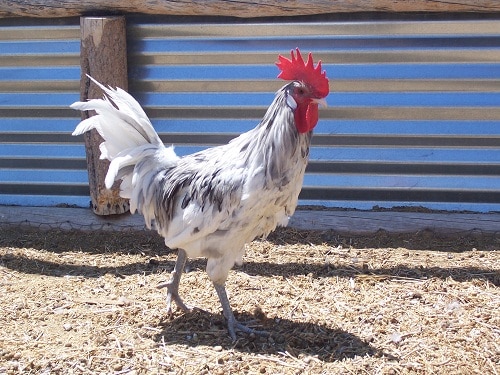
Enter Mr. Rooster
We got Mr. Rooster several years ago, and I'm glad we did. Having a rooster in our flock seemed to complete the "natural" order of things, and our hens instantly seemed more bold and content in their barnyard roamings. (Remember you don't *have* to have a rooster in order to get eggs. It's a purely optional thing–this post explains some of the pros and cons.)
I always kept an eye on him and his ginormous spurs (the sharp appendages on his legs) and watched him for any sign of aggression, especially around the kids. He only offered to challenge me once, but after a little "discussion," we sorted that out, and he respected me from that point forward.
So, I was shocked when he attacked Prairie Boy, unprovoked, several weeks ago.I heard Prairie Boy whimper, and turned around just in time to witness the second round of Mr. Rooster spurring him and knocking him to the ground. Thankfully, he attacked from behind, and only made contact with the back of his head. There was gushing blood, but no deep wounds.
It scared me to death to realize that the spur marks were at the exact same level as Prairie Boy's eyes… If he had attacked him from the front, instead of the back, it could have been much more severe.
I realize there is inherent risk anytime you have animals around children, and I accept that. However, we can't keep animals who are purposely attacking the kiddos, so it was decided Mr. Rooster had to go (that and he was starting to terrorize the hens a bit…).
Giving him away wasn't an option: no one wants a four-year old rooster that attacks kids… And the thought of tossing the carcass in the trash seemed horribly wasteful to me. So even though I knew the meat would be tough, I was bound and determined to put it to use in *some* way. Plus, I had heard promises of older chickens offering greater depth of flavor to stews and stocks, so I was eager to test the theory for myself.
The Process
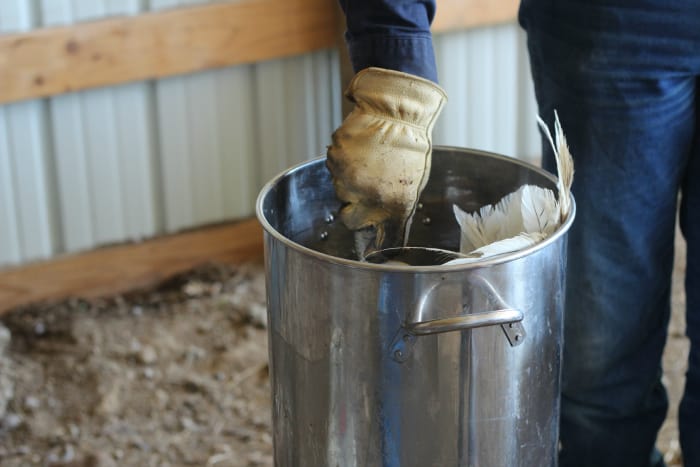
Mr. Rooster's end was swift and rather anti-climatic. After dispatching him and draining the blood, we dipped him in a pot of scalding water, which made the plucking process a breeze, and then proceed to gut and clean the carcass.
Here's my tutorial on how to butcher chickens (both pictures and a video!).
The Prairie Kids hung out while we did the deed, and they took it all in stride. We explained the process while we worked, and Prairie Girl (4 years old) asked a few questions about the feathers and the blood, and then lost interest and went off to play. It's important to me that they understand the gravity of killing an animal, and not be "grossed-out" by it, which is why I want them to experience it now instead of hiding it from them until they are older.
So there I was… Holding a scrawny, tough old rooster carcass… And bound and determined that it was going in the pot.
The key with any cut of tough meat is long, slow, and moist cooking. Although older birds are not ideal for roasting or frying, they make fabulous soups and stocks.
How to Cook an Old Chicken
You will need:
- 1 whole rooster or stewing hen, plucked & gutted
- Water (to cover the bird)
- Herbs of your choice (sage, rosemary, thyme, etc) fresh or dried
- 2 bay leaves
- Salt/pepper to taste (I use this salt.)
- More herbs, seasonings, and your choice of veggies (onions, garlic, carrots, celery) to make stock (if desired)
Cover the bird loosely (I used wax paper to allow the carcass to breathe–avoid plastic wrap) and place in the fridge to age for 4-7 days. This is a crucial step for an old bird, as the extended aging process allows the muscle fibers to relax and tenderize. Don't skip it!
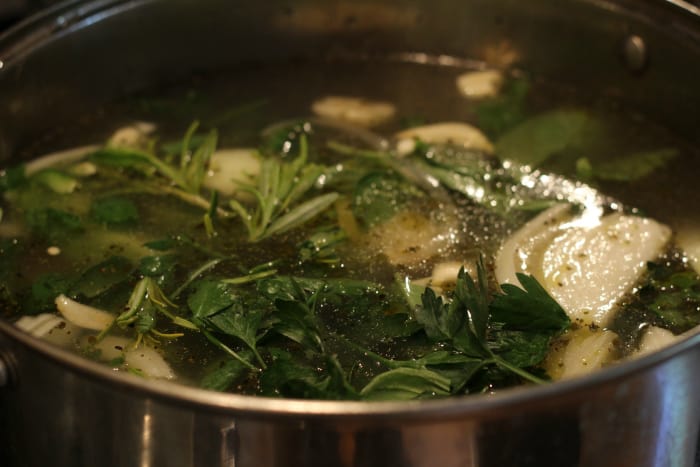
After the aging process, place the bird in a large stock pot and cover it with water. Season if you like (I tossed in some salt, pepper, rosemary, parsley, and an onion for good measure) and cover. Simmer for 6-12 hours.
Remove the bird from the pot and allow it to cool so you can handle it comfortably. Remove all of the meat from the bones.
(I sampled the meat as I cut it up– although there were a few strips of dark meat that were extra rubbery (I gave those pieces to the dogs), most of it was surprisingly tender!)
At this point, you can set the bones aside (we'll be using them to make chicken stock), and toss the meat back into the broth to make chicken soup. (Just add the vegetables of your choice, noodles, and seasonings to taste, removing the bay leaves before you serve it. I don't have an *exact* chicken soup recipe, since it's different every time I serve it.
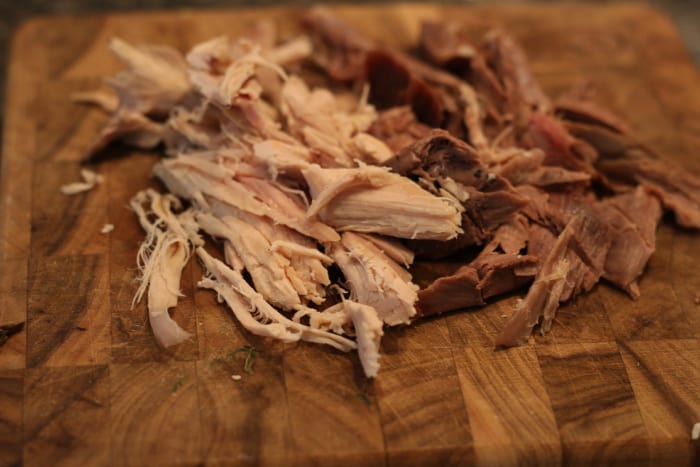
For this particular project, I decided to can my chicken soup for later, since it's too darn hot to eat soup right now. (I followed the directions in the Ball Blue Book and used my pressure canner).
Now you'll be left with a pile of bones. Throw them back in a pot with a few more veggies and herbs (to impart flavor), and boil them long and slow (I shoot for 12-24 hours) to make mouth-watering chicken stock. This post has detailed directions on making the stock, and also instructions if you want to can it (although you don't have to–it freezes well too).
And there you have it–you've just turned a tough old bird into flavorful soup and stock that will be a welcome sight at the supper table come winter.
Cooking up Mr. Rooster was a long process, but thankfully, it wasn't very labor intensive. I'm glad I did it, too– nothing went to waste, and I was able to add several jars of homemade chicken soup and flavorful, nutritious broth to my larder for later this year. Mission accomplished!
How to Cook an Old Rooster (or Hen!)

Ingredients
- 1 whole rooster or stewing hen, plucked & gutted
- Water (to cover the bird)
- Herbs of your choice (sage, rosemary, thyme, etc) fresh or dried
- 2 bay leaves
- Salt/pepper to taste (I like this salt)
- More herbs, seasonings, and your choice of veggies (onions, garlic, carrots, celery) to make stock (if desired)
Instructions
- Cover the bird loosely (I used wax paper to allow the carcass to breathe–avoid plastic wrap) and place in the fridge to age for 4-7 days. This is a crucial step for an old bird, as the extended aging process allows the muscle fibers to relax and tenderize. Don't skip it!
- After the aging process, place the bird in a large stock pot and cover it with water. Season if you like (I tossed in some salt, pepper, rosemary, parsley, and an onion for good measure) and cover. Simmer for 6-12 hours.
- Remove the bird from the pot and allow it to cool so you can handle it comfortably. Remove all of the meat from the bones.
- At this point, you can set the bones aside (we'll be using them to make chicken stock), and toss the meat back into the broth to make chicken soup. (Just add the vegetables of your choice, noodles, and seasonings to taste, removing the bay leaves before you serve it. I don't have an *exact* chicken soup recipe, since it's different every time I serve it.
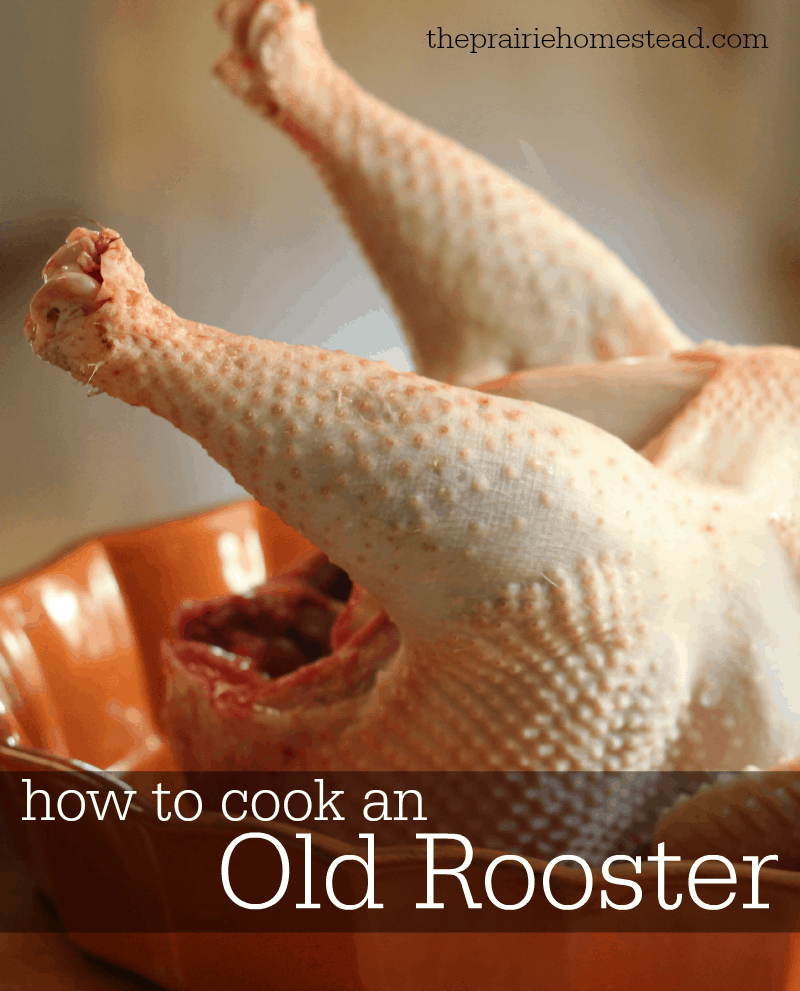
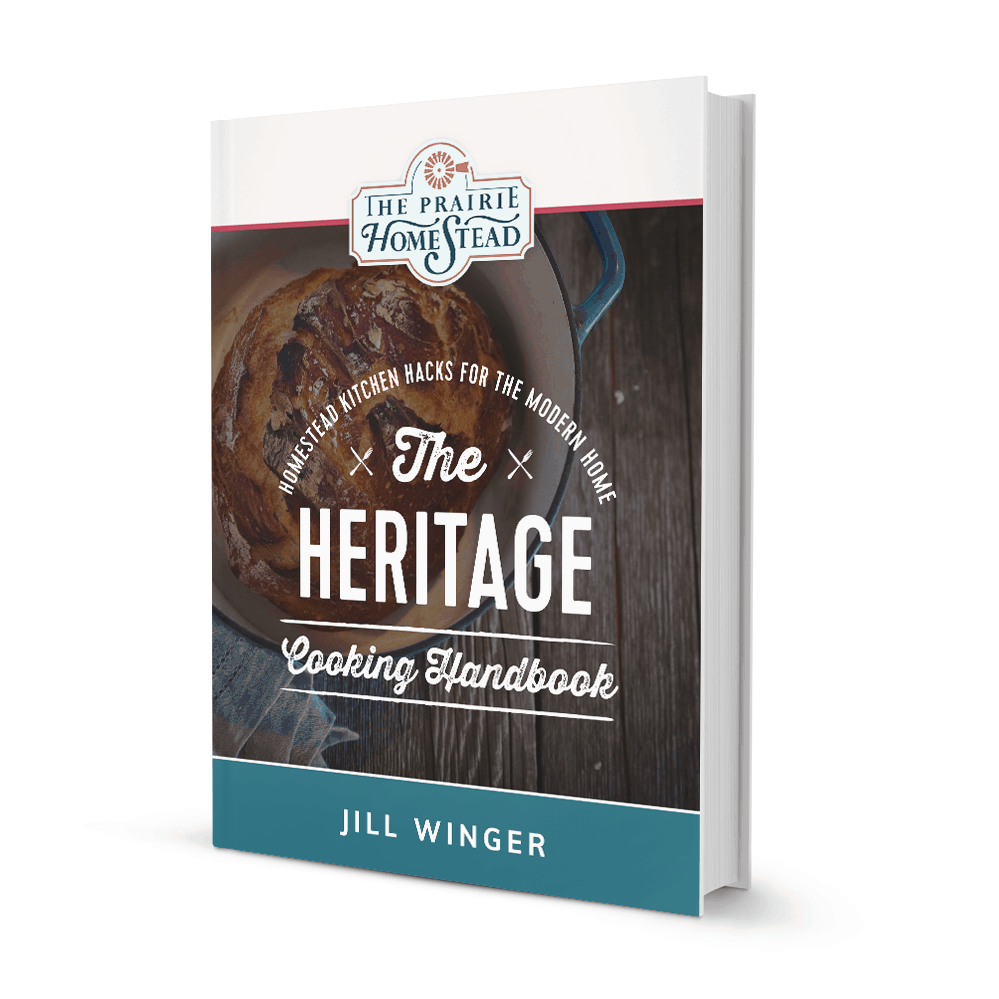
Learn to Cook Like a Farmer!
Get my best tips & recipes for transforming your kitchen into a farmstyle kitchen, no matter where you live! Enter your best email for instant access>>
How Long Does It Take To Cook A Hen
Source: https://www.theprairiehomestead.com/2014/07/cook-old-chicken.html
Posted by: bloomyouris.blogspot.com


0 Response to "How Long Does It Take To Cook A Hen"
Post a Comment